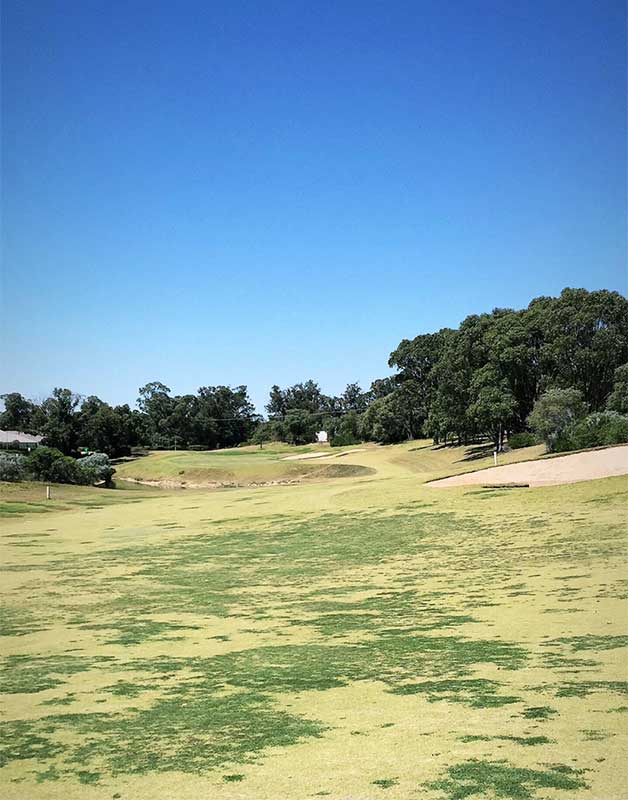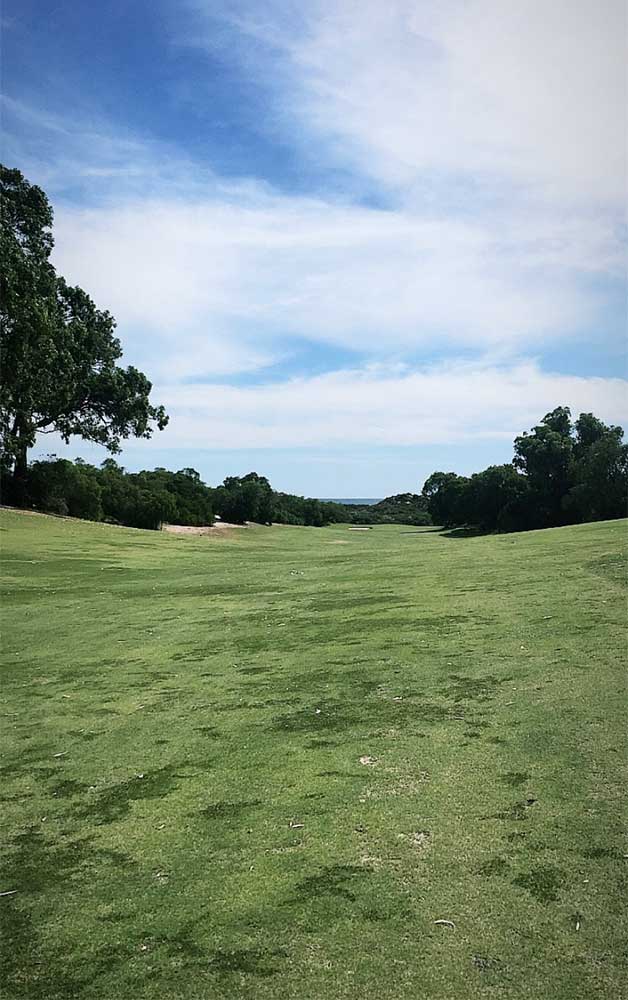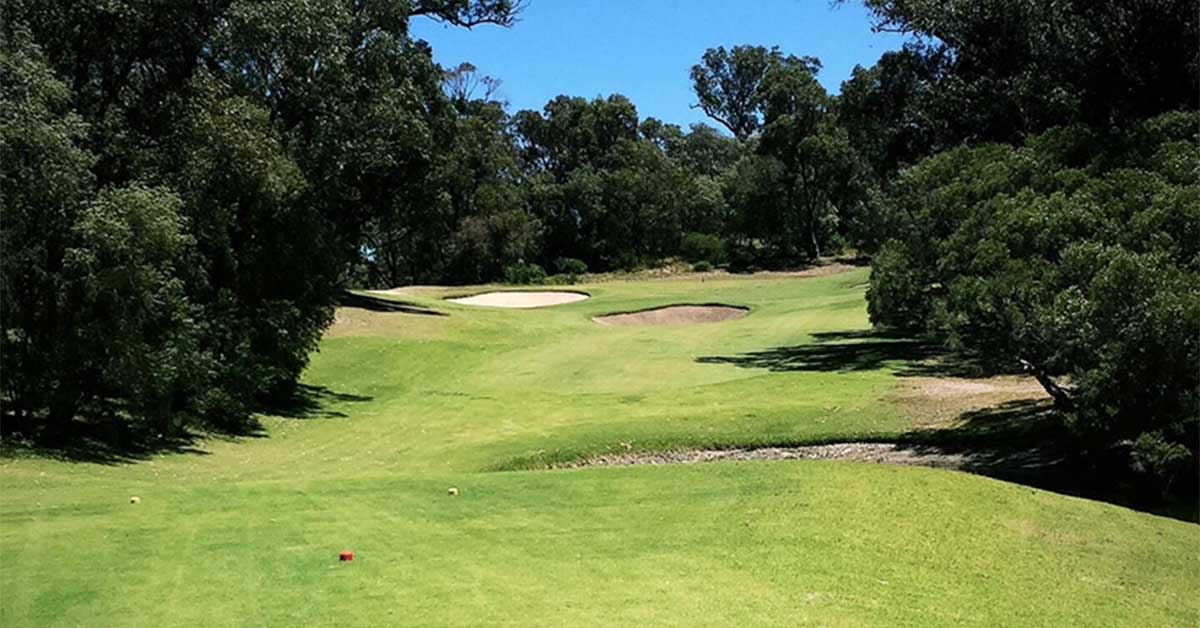The tale of Lakewood Shores Golf Course is one of loss with lessons to be learned.
The yardage book at Royal Dornoch contains small, prophetic descriptions about each hole. The famed 18th states:
As you prepare to tee off, think of the number of people in the past 400 years who have stood where you are.
Regardless of your round, be grateful for the energy to play and for the company and the scenery.
Take a deep breath.
Swing slow and true, and give thanks for the exercise of body, mind and spirit.
When I discovered this emotional poetry a few months ago, I wrote it down, and I now read it before I begin every round. For me, it’s a reminder to savour the next few hours of being with friends and playing the best game in the world. I deplore slow play as much as anyone else, but any time I find myself frustrated on the course, I re-read Royal Dornoch’s ode to golf and start savouring again. Where else would I rather be?
I wish I’d had that mindset in February this year.
Imagine walking onto a course, playing, leaving and then weeks later learning it was closing its doors without the chance to enjoy one final round. That was my experience at Lakewood Shores Golf Course at Binningup.

This nine-hole, links-style course was a hidden gem of the West Australian golf scene. A simple blue sign on the Forrest Highway is the only indication of the pure golf joy that laid 146 kilometres south of Perth. Most people simply pass the sign without noticing as they venture south for a weekend of wine sipping in the Margaret River region (or for one of the incredibly underrated golf trips in the country).
Designed by Michael Coate in 1986, Lakewood Shores shot to fame after it was mentioned in Tom Doak’s Confidential Guide to Golf Courses, having been played by Darius Oliver. Oliver noted the course had: “uncluttered holes arranged in a single loop through gently moving sand dunes and with pleasant coastal outlooks. It developed a following for the quality of its nine holes, along with its ‘honesty box’ green-fee system and the fact the course was managed – well – by a single greenkeeper. Binningup certainly ranks as one of Australia’s best nine-hole courses.”
It was said a full 18-hole course was planned along with a large residential estate, however early on the development struggled. Many compared the course to Pacific Grove in California – incredibly high praise for a nine-hole track in a beachside country town, more than an hour from the most isolated capital city in the world.
The Tales Were True
I’m always reticent to learn too much about a course before playing it, but many people had told me of the beauty, challenge and fun that Lakewood Shores possessed. I had heard stories of lost balls, picturesque views and a routing that was too good to be true.
 I first played Lakewood Shores in late 2019 and after being invited on a golf trip to the south-west this past February, I insisted we add it to our itinerary. The playful routing of Busselton, the scenery of Margaret River, the challenge of Bunbury, the thrill of Dunsborough Lakes and the quick greens of Capel are all attractive but something about Lakewood Shores struck differently.
I first played Lakewood Shores in late 2019 and after being invited on a golf trip to the south-west this past February, I insisted we add it to our itinerary. The playful routing of Busselton, the scenery of Margaret River, the challenge of Bunbury, the thrill of Dunsborough Lakes and the quick greens of Capel are all attractive but something about Lakewood Shores struck differently.
I arrived at the course and paid my $20 green fees in the tin shed that was so small I couldn’t stand upright. My expectations were high, perhaps unfairly so. Now, full disclosure, I sometimes struggle to read golf articles that talk about every hole, but given this dreamland no longer exists, I feel somewhat obliged to give you a rundown of how it played.
Standing on the first tee, a 532-metre par 5, I knew I was in for a thrill. A relatively blind tee shot up a right-to-left sloping fairway, with water on the left. Yes, that seems a reasonable way to start.
The 169-metre uphill par-3 second required you to thread the needle between trees and clear a large bunker at the front. But it was the walk up the hill to the green that captured me, as if I was entering a whole new course.
Two holes down, and I was starting to think I had fallen victim to the hype. How wrong I was about to be.
The third hole had one of the most refreshing views in West Australian golf. A tee shot directly into the wind over the hill, which was then greeted with a face-slapping breeze as the ocean stared you in the face. That was cool, I thought to myself.
After the abnormally long walk to the fourth tee, I stopped. Breeze howling in from the left, on what was largely considered the best hole on the course. Doglegging from left to right, featuring ocean views, it was a place more akin to setting up a campsite than hitting a golf ball. It would not have looked out of place on some of the world’s great links courses, with exciting bunkering around the green and a gently rolling putting surface.
“Now we’re getting somewhere,” I said out loud to absolutely nobody.
Five was equally as good, with the tee shot inviting you to cut the corner. What it didn’t tell you was the sheer scale of the bunker on the other side. This was one of two holes with two flagsticks if you were to play the course as an 18-holer. Six was a wildly good par 3 with fantastic bunkering and an undulating green. It was one of those holes where you stand on the tee and think, I’m going to throw one up here and hope to hell it doesn’t end up short.

If there was a weak hole – and that is incredibly harsh – it was the seventh. But, if that disappointed you, then the eighth rekindled your love for this beachside beauty. Playing back away from the ocean, the eighth hole at Lakewood Shores is by far the toughest hole I’ve played. At a long 403 metres, this par 4 required a long and extremely precise tee shot. You were then left with two options: carry the water and pray that you didn’t fall short, or lay up (yes, I know on a par 4 that seems criminal) to the right-hand side, which would be to a space no wider than 15 metres.
I heard many a story of players standing on the fairway wondering how in the world they would walk away with par. I still firmly believe that the eighth at Lakewood Shores was the hardest par 4 in Western Australia.
The final hole was a 178-metre par 3, again with multiple pin positions. If you’d not been beaten up enough, you needed to carry the water one final time and hope to God you found the safety of the green.
Sounds amazing, right? It was, and that’s what makes writing a column like this so difficult. I’m both proud to say I played this little gem, but also saddened I’ll never add it to another golf-trip itinerary. I wish I had another opportunity to show friends the view as you walked over the hill on the third, or the beauty of the fourth. I wish I had another opportunity to stand on the eighth tee wondering how in the world I would walk away with a decent score. But mostly, I wish I’d savoured the experience more than I did.
I’m both proud to say I played this little gem, but also saddened I’ll never add it to another golf-trip itinerary.
The course temporarily closed during the coronavirus pandemic, however the club, which played there each Saturday morning, had another announcement to make just a few weeks ago: it’s permanent closure. The outpouring of disappointment on social media blew me away, with people from across the country posting comments, memories and photos.
Now the holes have been filled, the grass is growing longer and the flags have been removed. The once mighty, and perhaps best, nine-holer in the country is officially gone.
The club’s 80-odd members have been forced to find a new place to play, with many joining nearby Harvey Golf Club. House prices are also expected to drop in the area. Binningup was once a place with a beach and stunning golf course; now it has just one of those.
Lakewood Shores will now be one of those courses that live on through stories and memories; an occurrence happening all too often in Australian golf.
As golfers we play the game regularly, but that doesn’t mean we shouldn’t take in the sights, smells and experiences each time we walk onto the course. For all you know, it could be the last time you play there; courses across Australia are closing frequently, natural disasters are prevalent and the threat of development is ever-present.
The next time you stand on the tee, think back to the poem from Royal Dornoch and give thanks for the exercise of mind, body and spirit.
And savour every second.




